History Underfoot: Flooring in the 19th Century Home
To me, the best old houses are the ones that no one has touched in years. The floors are covered in wall to wall carpeting of dubious antiquity, or layers upon layers of linoleum.

Editor’s note: This is an update of a series that ran in 2010. Read the originals here: Part 1 and Part 2.
I like to go to open houses with friends who are looking to buy, or for myself, to satisfy my curiosity about places in my neighborhood that I’ve always wanted to see. And hey, you never know…..To me, the best old houses are the ones that no one has touched in years. The floors are covered in wall to wall carpeting of dubious antiquity, or layers upon layers of linoleum.
The moment of truth arises when you can grab the end of the carpet, or lift up the linoleum and there they are, protected for umpteen years from wear and tear and the foibles of bad decor: parquet floors! Even better is going to a corner and catching sight of an ornate border, ringing the room, the different colored woods forming lines and patterns, artistry in wood. Love it! However, sometimes you can pull up the carpet, and there is nothing special there.
A house with ornate woodwork, marble fireplaces, the works, and there you go — an eh floor. What happened? Were the original owners cheap? Did someone tear out the floors? Why do some houses have such wonderful original floors, and others don’t? When did parquet become popular, and what did homeowners use in our Brooklyn homes before that?
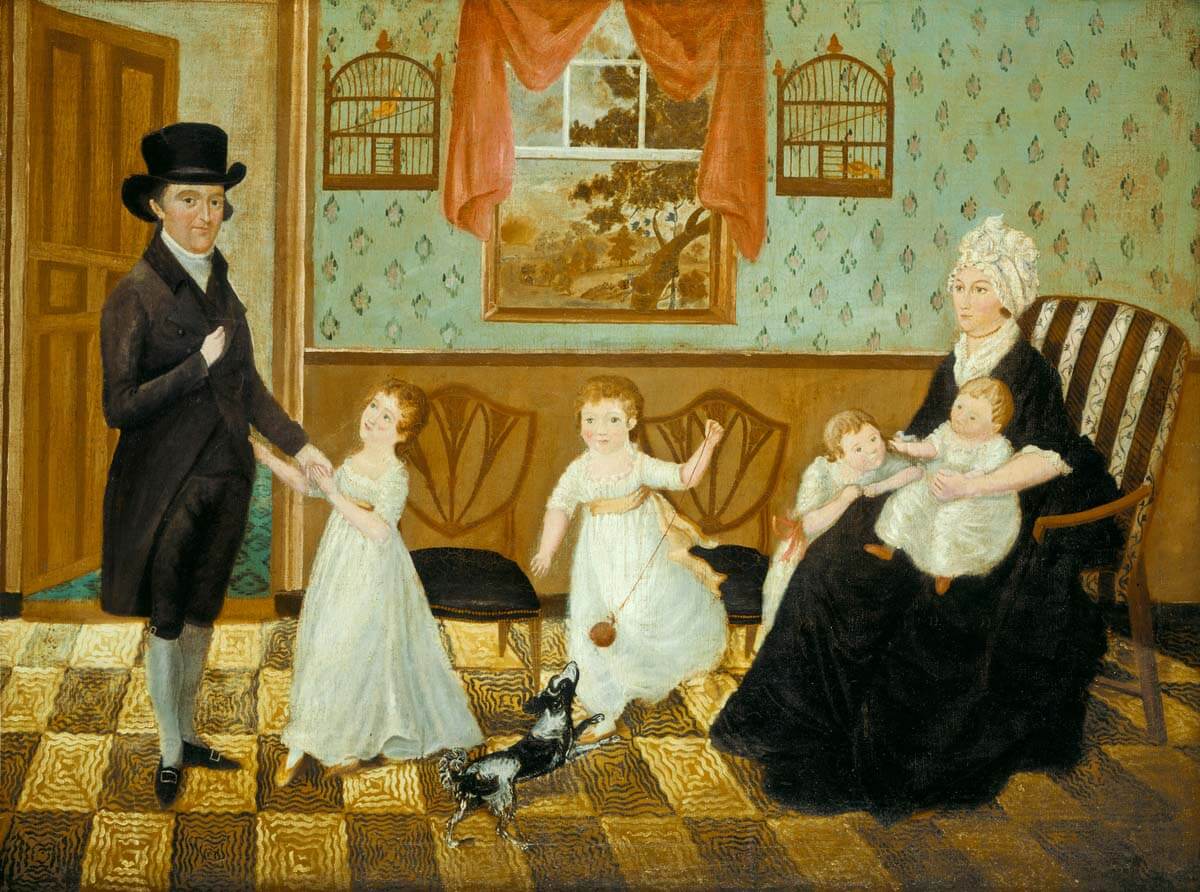
With the exception of a handful of Colonial era houses, most of the oldest brownstones and frame houses in our oldest neighborhoods are from the 1830s to the late 1850s. In these earliest houses, the original floors were softwood plank floors, like pine, laid in random widths. The original finish was never a gleaming waxed or varnished finish. To clean these floors, they were usually scrubbed with sand and a wire brush, or sometimes bleached with lye. Most of the time, the floor was either painted, or covered.
Painted floors were often stenciled with border or rug patterns. Coverings ranged from woven matting, somewhat similar to our modern day sisal rugs, to heavy canvas painted floorcloths, to a covering called drugget, or carpet. Drugget was a cheap woolen or cotton/flax plain woven fabric, sewn together to the desired width.
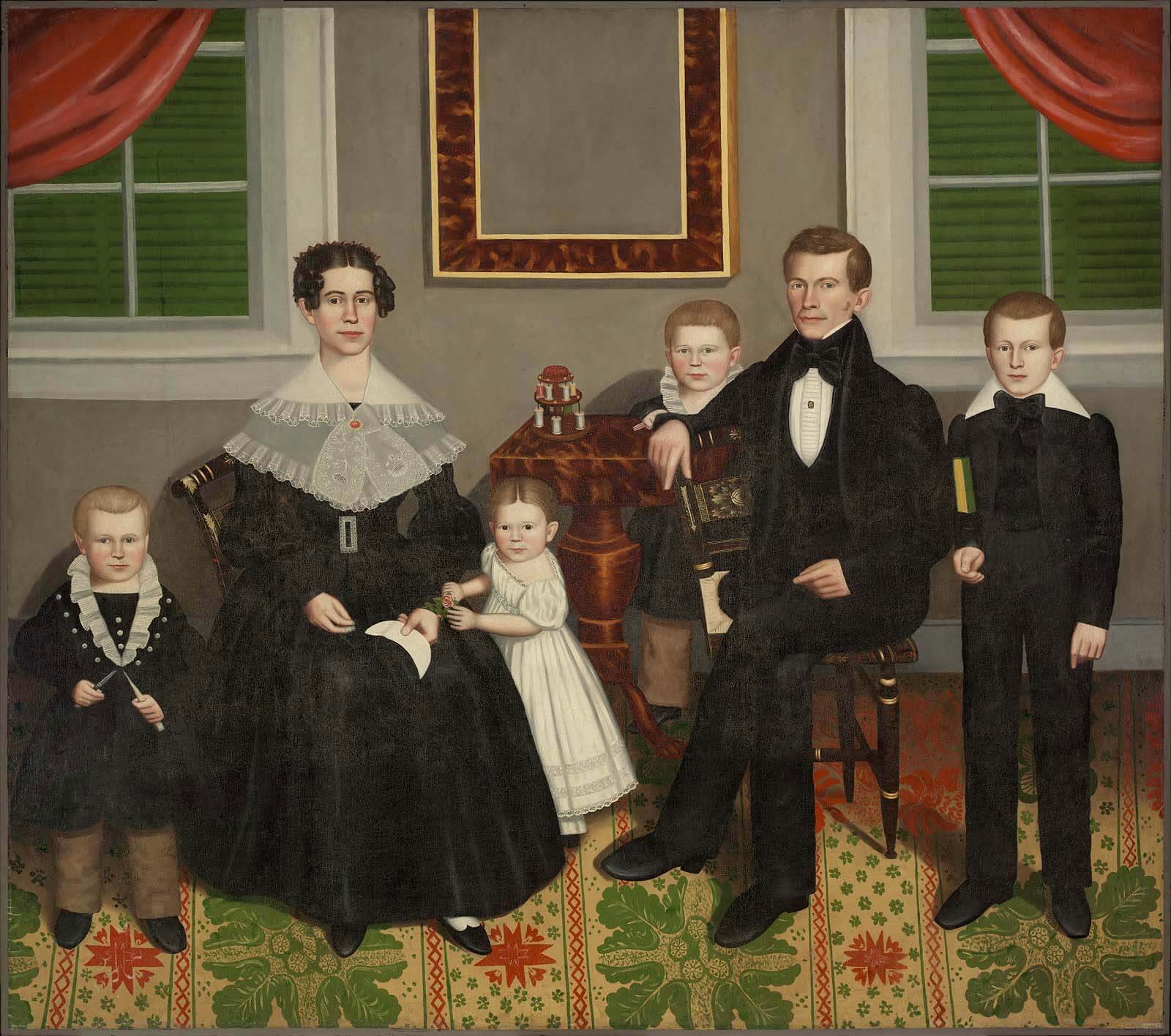
Depending upon one’s budget, drugget was often used to cover a better carpet, to protect it, and was also popular underneath the carpet to provide an attractive border where the carpeting stopped. Matting, much of it imported from India and China, also was used as a carpet padding, and also protection of the carpet in well traveled areas, such as near stairs and at entrances.
As manufacturing techniques for carpeting improved, more and more households were able to afford carpeting. One popular carpet was the rag rug, often made at home by braiding strips of fabric, or weaving lengths of fabric through a loom, creating the kind of rugs most of us are familiar with today as small bathroom or casual rugs.
Most carpeting of the time was woven on looms in narrow lengths and then sewn together to achieve the desired width. The term broadloom comes from this time, and referred to the first larger looms invented that were able to weave wider and wider carpets. Carpet from this period was reversible, as the weave was not the tufted punched carpet that we are used to today.
The designs and patterns were woven into the rug, like a French Aubousson rug. The jacquard loom was invented in France by Joseph Marie Jacquard in 1804. It utilized punch cards that were read by the steel needles in the loom, which raised and lowered the harness of the loom allowing different colors to be woven in, creating patterns. The technology came to the US by 1825, and by 1832, jacquard looms were used in the carpet factories of Lowell, Massachusetts, creating a booming rug manufacturing center in the US.
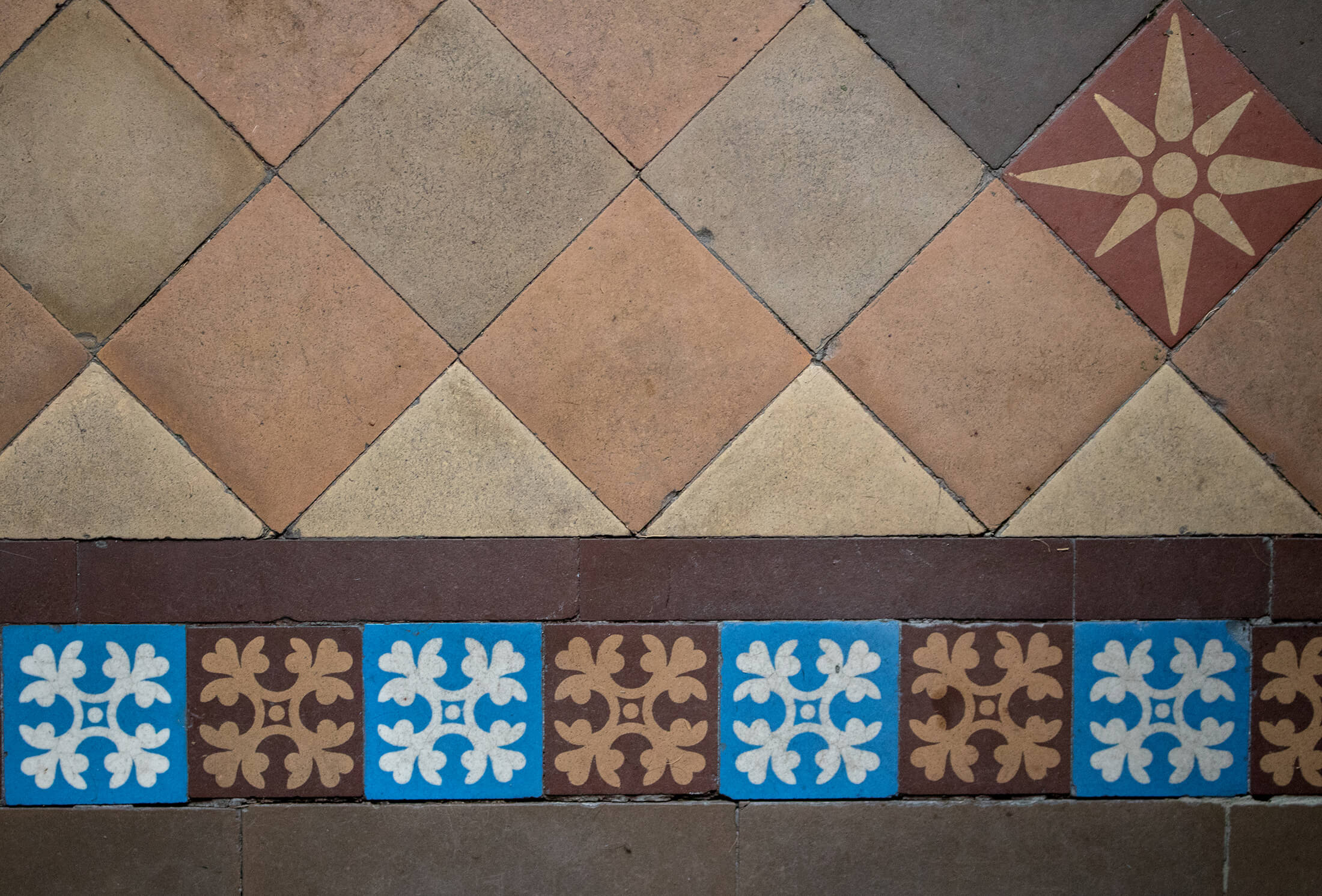
Up through the 1870s, the trends in flooring stayed much the same. Painted floors were recommended, especially for service areas, hallways and bedrooms. Stenciling was still popular, and a viable substitute for carpet in these areas. Tile floors were becoming more popular, especially encaustic tile in vestibules, hallways and sometimes verandahs and porches. The tile was expensive, but long lasting, and worth the expense, as it was easy to clean, and the patterns were very attractive. Very wealthy homes began to tile their receiving rooms and foyers in the European manner, often with encaustic tile, but also with marble, sometimes in patterns of different colored stone.
Floorcloths were also still popular, as was grass matting, especially in the summer months. Drugget was now used mostly as a rug underlining, and as an insulation for plank floors in winter, when contracting wood allowed drafts to seep up through the cracks and separations in the flooring. But carpeting was king.
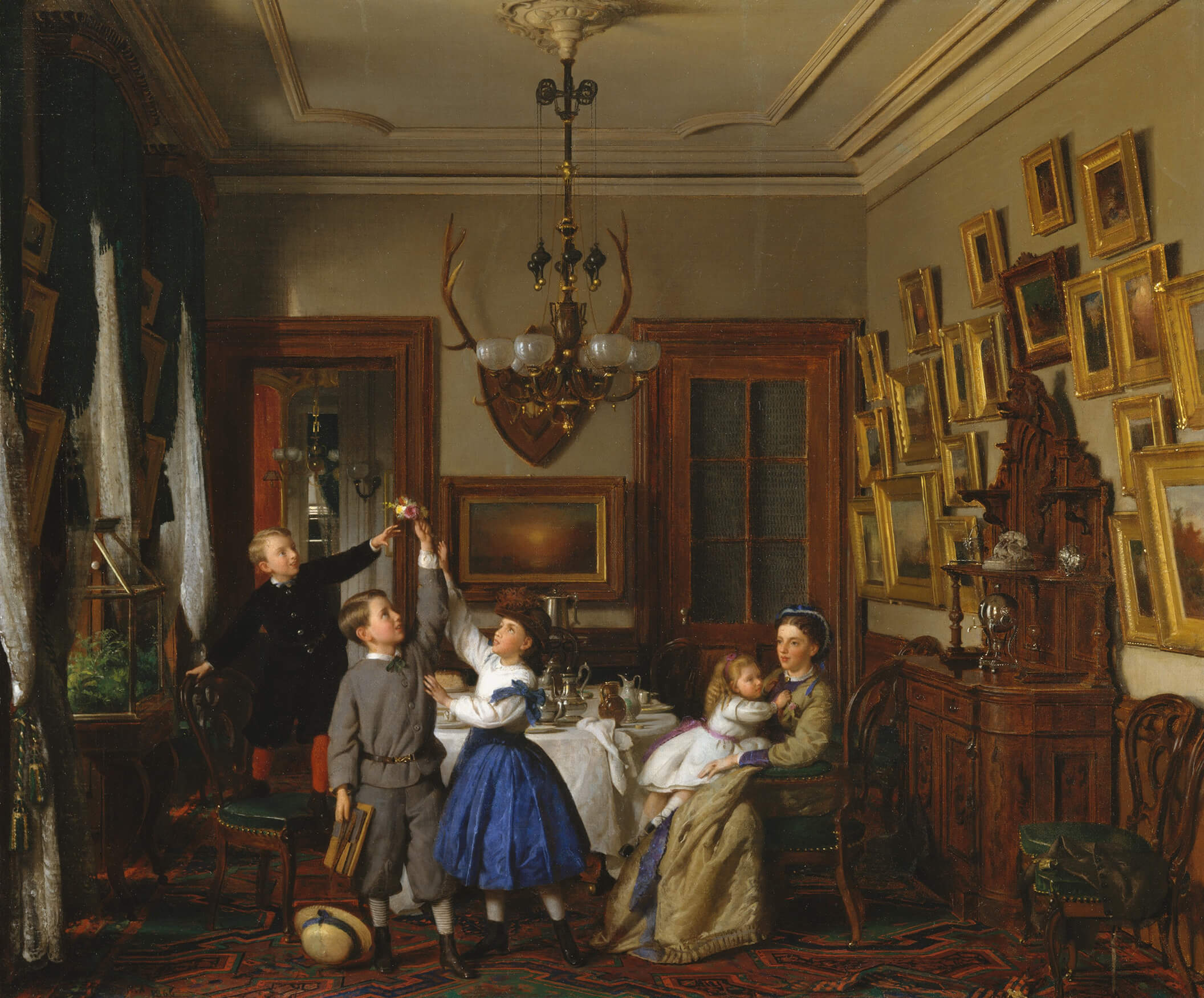
The consumer of the mid 19th century had options. Carpeting had become so inexpensive that middle class homeowners could afford to cover all of their floors in their public rooms in carpet. Carpeting had become a basic household item, not a luxury. Magazines and books on home decor advised “as it is customary in this country to carpet every room in the house, flooring need not be laid with a view to appearance. It is cheap to lay down an undressed floor, covering the joints with slips of brown paper and then spreading old newspapers instead of straw, under the carpet.” (The Economic Cottage Builder) Many floors were covered with what was called Venetian carpet, a narrowly woven rug materials made of striped bands. This was popular on stairs, as well as in larger rooms. Tufted pile carpet, called Brussels or Wilton carpet, had been invented in Europe since the late 1700’s, but was hugely expensive.
By the mid 1900s, the techniques had become more mechanized, and production had begun in the United States. The looms for these carpets were still relatively narrow, and the carpet was still sewn together to create the width needed for a home. Axminster carpet, another pile carpeting from England, woven with very realistic natural patterns and colors, was also imported to better homes during this time period, as well.
As pile carpets grew in popularity, so did the patterns and colors used. To our eyes today, many of the patterns and colors are extremely fussy and bright, and the patterns overwhelming. Domestic critics of the day thought so too. They decried the realistic looking shaded floral patterns, which gave three dimensionality, and said “Carefully shaded flowers and other vegetative decoration always appear out of place upon the floor to be trodden on.”
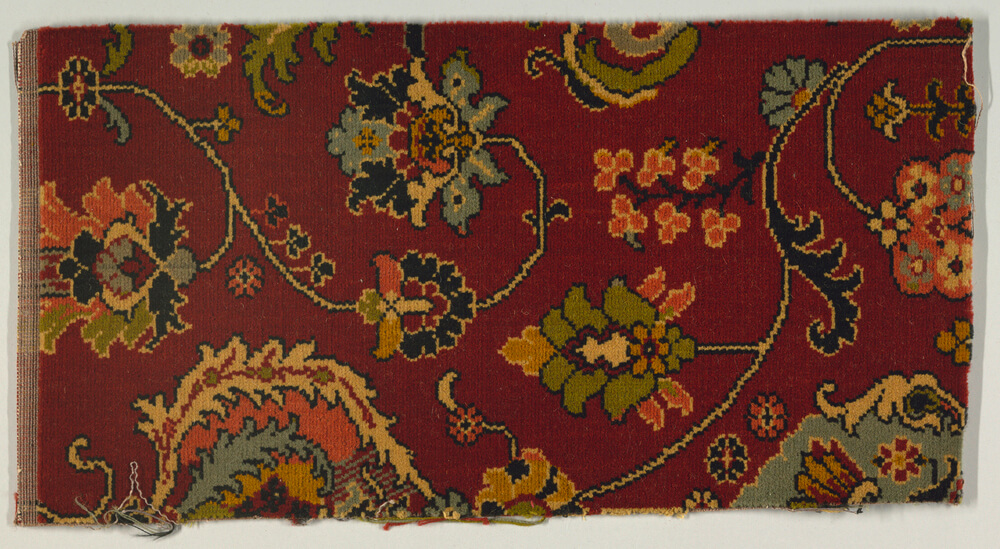
“Crunching living flowers under foot, even to inhale their odor, is a barbarity, but to tread on worsted ones, odorless and without form, certainly seems senseless.” (Rural Homes). Another publication, the World of Art and Industry, said, “One is almost afraid to walk here, lest his inadvertent foot should crunch the beauty of the roses, or tread out the purple juices of the grapes. We do not strew bouquets or pile fruit upon our parlor floors to decorate them . . . common sense should teach that these are inappropriate.”
Unfortunately for the critics, people loved their patterned and floral rugs, and bought miles of it, well into the 1870s and beyond. Wall to wall carpet was king. To help a confused homeowner do it right, numerous publications laid down rules regarding the colors one should use, the size and scale of the pattern in relationship to the room, and the most important rule; how the overall colors of the carpet affected the color scheme of the rest of the room, so that rooms could be called the green room, the red room, etc, instead of just the southwest chamber, or the room your grandmother had last summer.
As America rushed headlong through the second half of the 19th century, clutched firmly in the hands of householders in 1872 were the Bible, and Charles Eastlake’s” Hints on Household Taste in Furniture, Upholstery and Other Details.” The influence of this English taste master cannot be diminished.
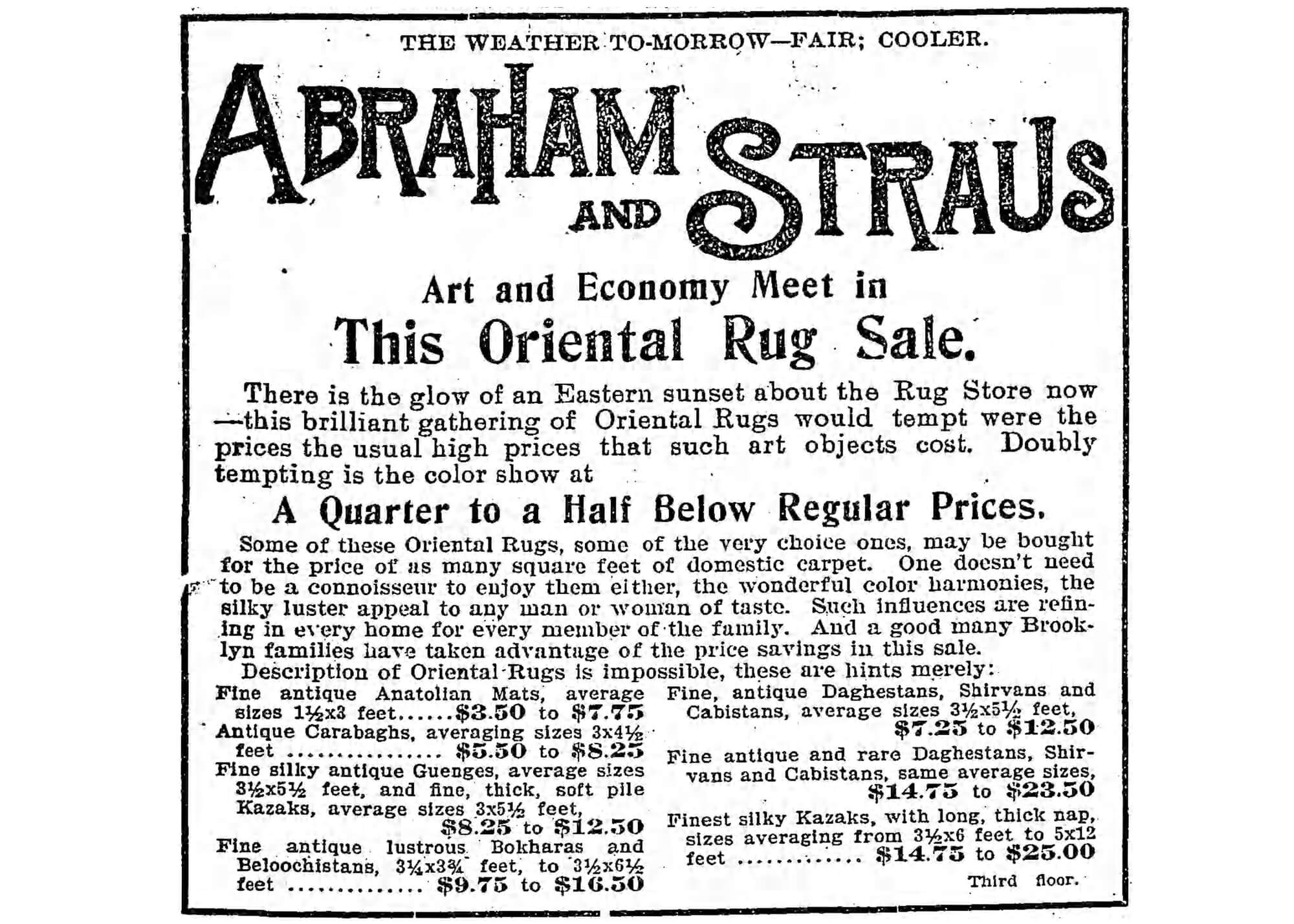
Among his many pronouncements was to advocate the return of the hardwood floor. Eastlake maintained that the best flooring for a proper house was an Oriental rug over a hardwood floor.
Along with William Morris, whose own ideas were gaining ground in the US, Eastlake wanted the weaver’s art and craftsmanship of the rug to be noticed and appreciated. He also stated that Oriental rugs were not as wasteful as wall to wall carpet, which could not easily be reused in another room, and most importantly, hid the floor, contrary to the first principles of decorative art, which require that the nature of construction….should always be revealed. American writers agreed, advocating hard wood and parquet floors.
All of a sudden, carpets were reviled as carriers of dirt and filth from outside the home and very liable to putrefy when subjected to damp and warmth. In the space of a few years, the trend shifted from wall to wall carpet to hardwood floors and exotic carpets from the Orient, a trend which would carry well into the next century.
Unfortunately for homeowners not buying new homes, that left them with now inferior and outdated softwood floors. What to do? The critics advocated several options: lay down parquet, which Eastlake wrote was much in vogue in England, but that could be quite expensive.
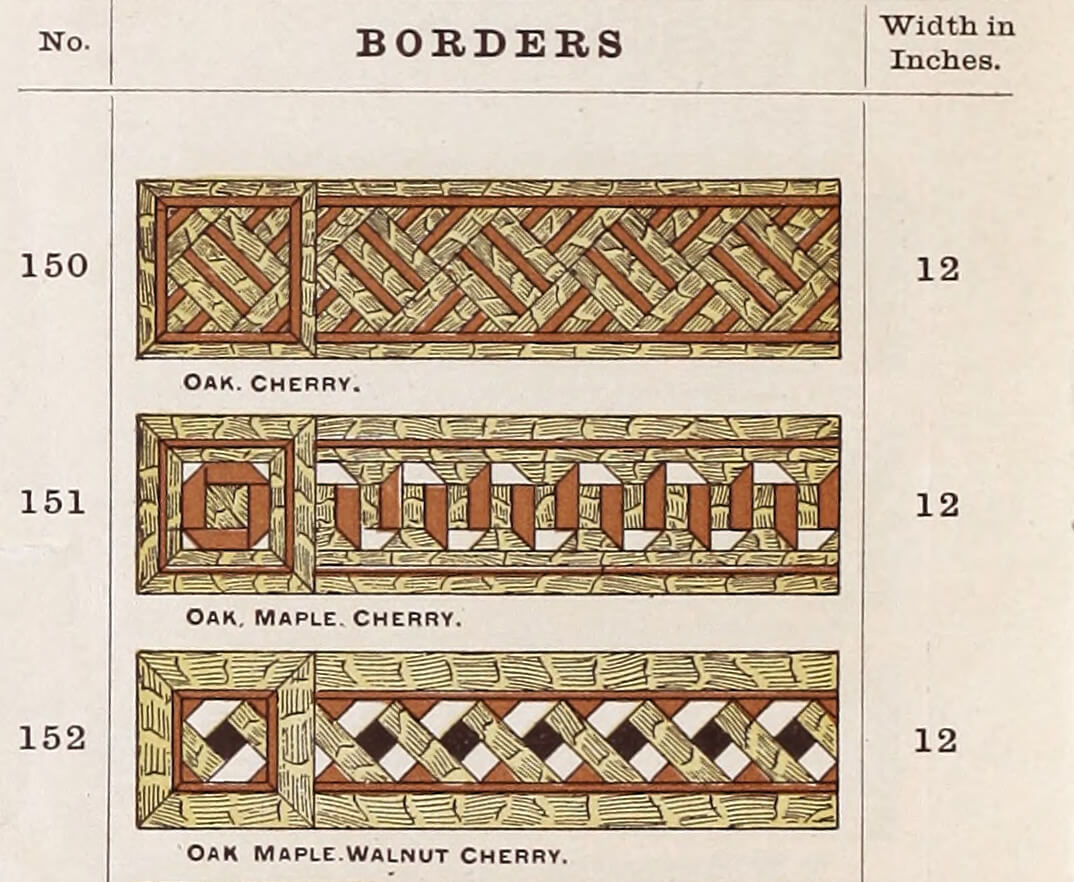
One could compromise and lay a parquet border around three feet into the room from the walls, and put a carpet in the center of the room, (what we today would call faking it), paint, or put down a wood carpet. I recently saw a house with the second option. The room had a plain hardwood perimeter extending about four feet into the center of the room.
It had an attractive border, as well. In the middle of the room, which was originally a bedroom, was a large square space which was not parqueted, and was originally subfloor, although someone had taken up the carpet, probably long ago, and substituted vinyl tile. This was in a high end house by a well known architect, which was built in the 1890’s, so this practice was not restricted to retrofitted earlier houses, or that uncommon. If a large Oriental carpet had been laid, the bed would have covered most of it anyway, and no one would ever have known.
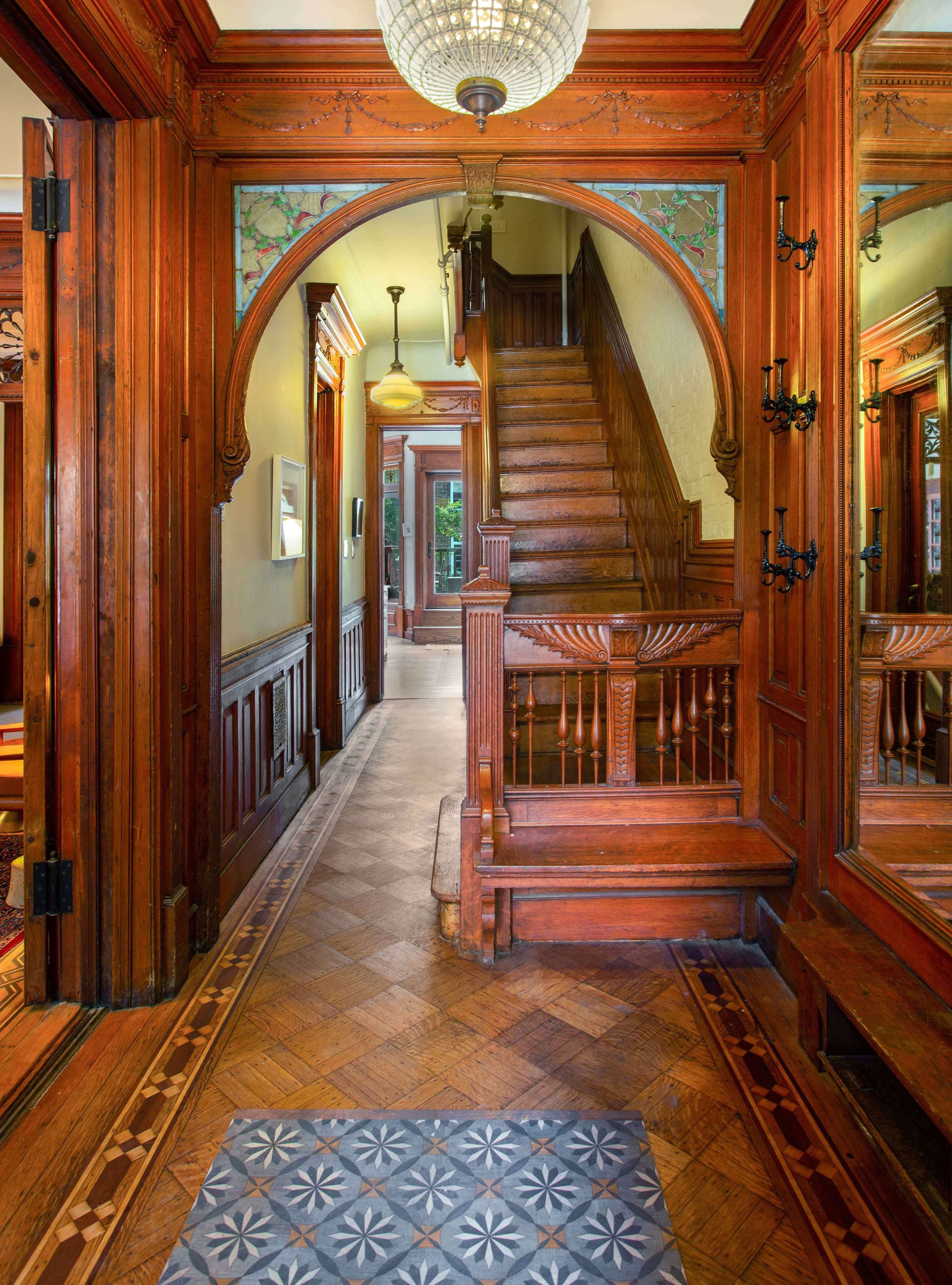
For many homeowners, wood carpeting was the way to go. Wood carpet was thinner than regular parquet, and was composed of strips of hardwood, about a quarter of an inch thick, glued to a heavy muslin backing. It could be installed right on top of existing flooring.
During the 1880s, the Decorative Wood Carpet Company of Warren, Ohio, carried over 50 patterns. The carpet could also be used as wainscoting, and the company also made floor medallions and borders. The price was competitive with that of Brussels and other carpets, at around $1.75 a linear yard.
Painting was also still an option, but now, instead of trying to paint faux carpeting, the critics advocated stains and paint that mimicked inlaid woods, or for less work, better grades of wood. Tile, especially in hallways and entryways was also more popular than ever, especially with the popularity of Minton tiles gaining strength.
These were expensive, however, and soon American companies were following suit, making both glazed Minton-like tile, as well as encaustic tile. Floorcloths were still popular in hallways and service areas, but the critics condemned the popular practice of painting faux marble and stone cloths, and advocated simple geometric designs.
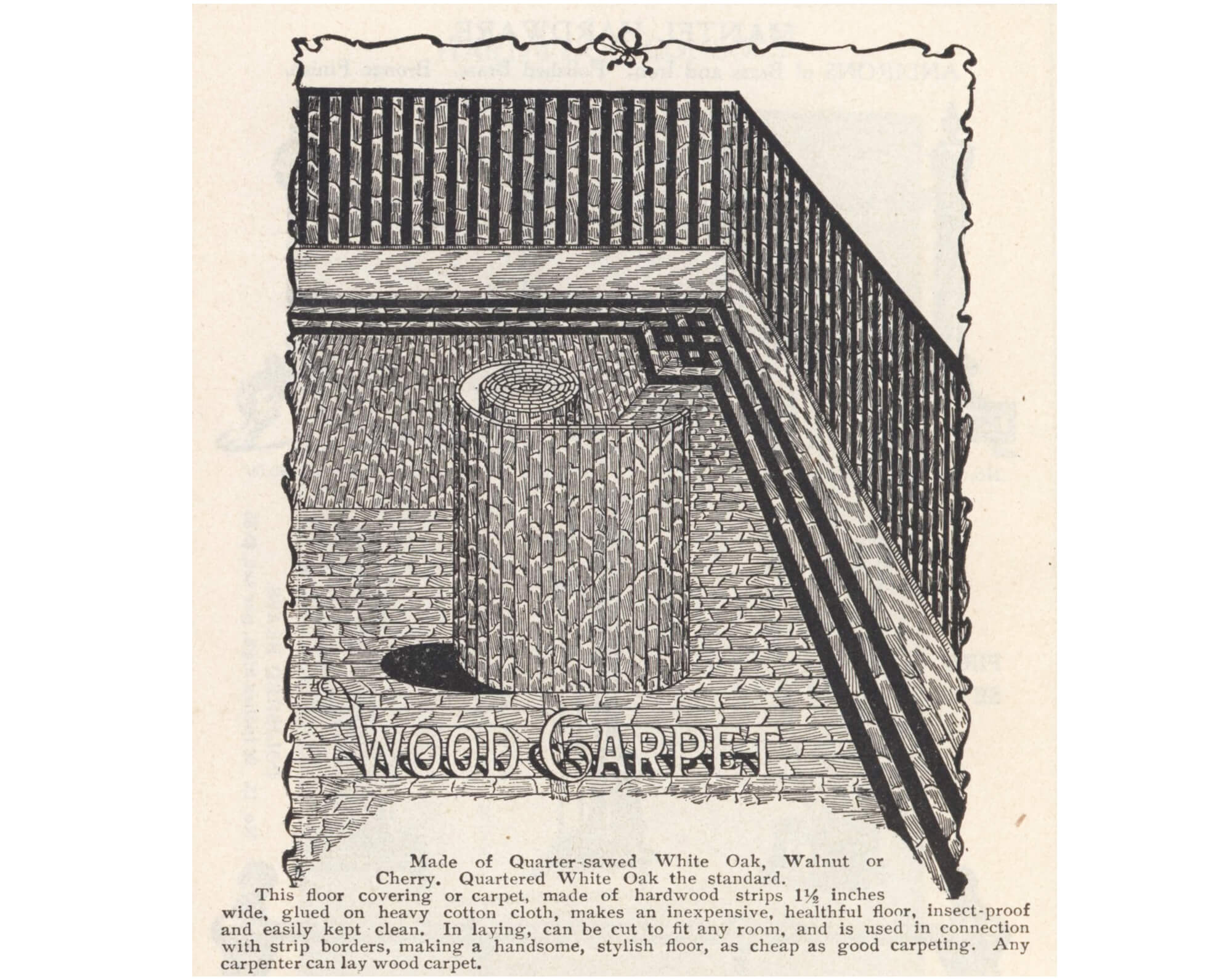
Linoleum also had been invented, and soon became a popular flooring, especially in halls and kitchens. Straw matting was still extremely popular for bedrooms, especially in the summer, and in warmer climates. It was now dyed, or stained in colors and patterns, and usually had fabric borders that coordinated with the room, much like today’s sisal and grass flooring.
Ironically, now that wall to wall carpet was at its cheapest, because of so many advances in the technology of weaving, the critics and domestic reformers had thrown it under the bus. Oriental rugs were the new carpet, rugs made by the hand of craftsmen, not machines. Eastlake, Morris, and their American counterparts were adamant on this principle. But the majority of Americans, ie those not rich, stuck with their machine made carpets and rugs. The only thing that changed was the popularity of Eastern style geometric patterns, replacing the fad for fruits and flowers and foliage underfoot.
By the last decade of the 19th century, and well into the 20th, hardwood floors became the norm for all new construction. Plain strips of tongue and groove flooring, usually in oak, was now throughout most custom made and spec houses, in hallways, ground floors, and upper floors. Most parlor floors enjoyed parquet floors, usually with a decorative border. The ornateness of the patterns, and the types of wood used were dictated by the money spent.
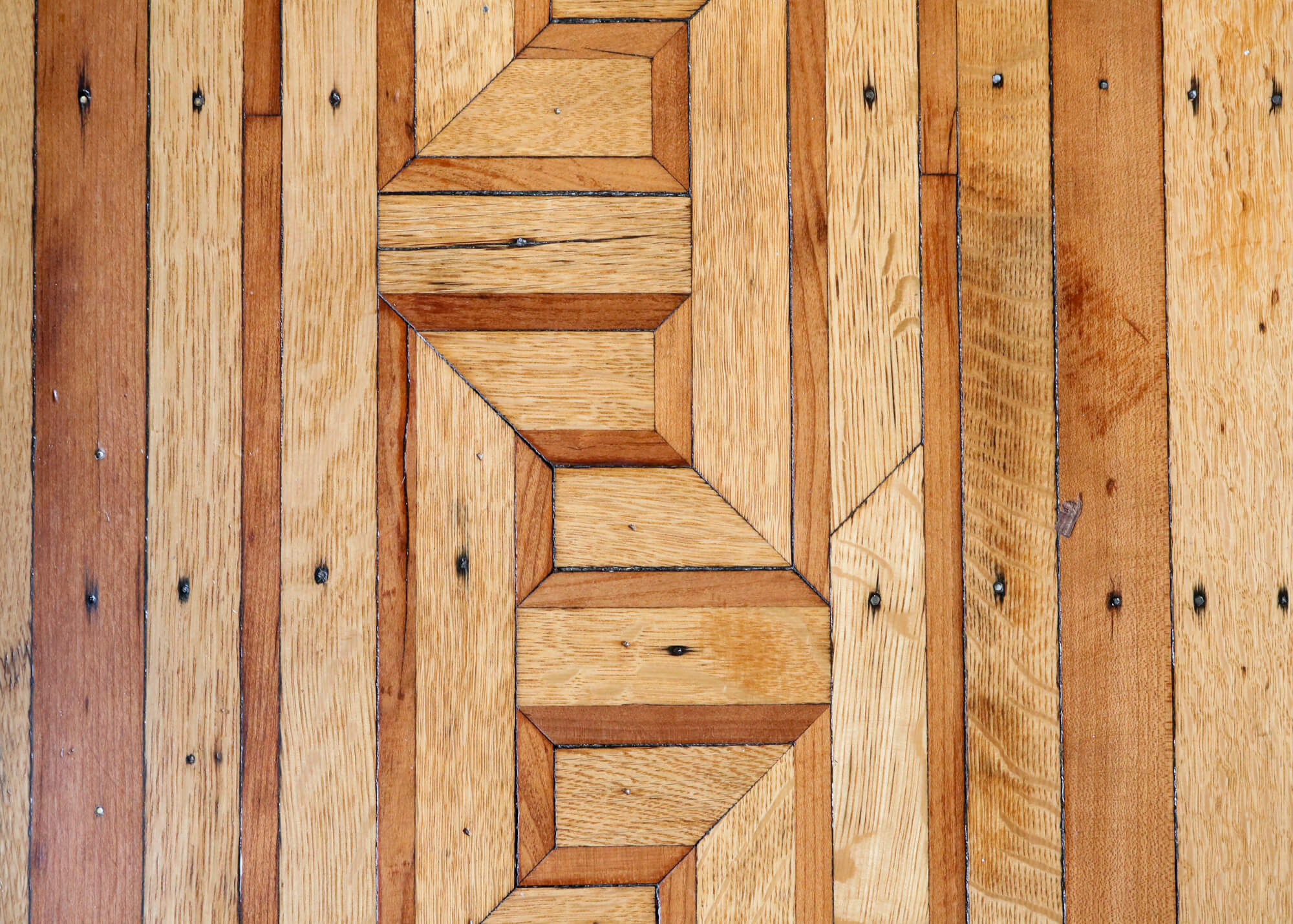
The best parquet was 7/8 thick, put together with tongue and groove edges. The borders, often quite ornate and complicated, are also tongue and groove, and used different woods for color changes. Good parquet was about 1/2 thick, and was nailed to the subfloor. Some styles featured alternating blocks, consisting of strips of wood, others are a more European herringbone pattern, and some floors just narrow strips of wood laid on the diagonal running from one end of the room to the other, with a wide border.
These borders are also nailed down, and may be all oak, with some stained a darker color. Wood carpet was still in use, and was still extremely popular, and is in many of our homes today. By the 1890s, it was 3/8 thick, still glued to a muslin back, and then nailed down with finishing nails. Many homeowners today have discovered that they have this kind of parquet, when too many sandings have rendered the parquet paper thin.
The woodwork of the day was made to show off the natural colors and grains of the wood, whether oak, walnut, mahogany or other exotic wood. The floors would have done the same. We often think the woodwork in late 19th century was dark and oppressive. Often that is because we are seeing it after over 100 years of old shellac and varnish, dirt, wear and tear. When the detritus of a century is removed, the natural wood shines. The same holds true on hardwood floors.
In closing, by the end of the century, wood floors were not what they were at the beginning of the century. In 1898, the Wood-Mosaic Company of Rochester, N.Y., wrote in an article entitled “How to Treat a Soft Pine Floor”: “If very bad use it for kindling wood.”
The article elaborated, “Most soft pine floors are very bad. If in fair condition, cover it with thin parquetry or wood carpet. Or, if it must be scrubbed and mopped like a barroom or a butcher’s stall, cover it with linoleum or oil cloth. In this case don’t cover with parquetry. Don’t cast pearls before swine. Or it may be painted. Paint adheres well to pine. Don’t cover it with a dusty, dirty, disease disseminating carpet.” Luckily, today we can make up our own minds.
My source for most of this information was the wonderful “Victorian Interior Decoration: American Interiors 1830-1900” by Gail Casky Winkler and Roger W. Moss.
Related Stories
- From Pakistan to Brooklyn: A Quick History of the Bathroom
- From Open Hearths to Open Plan: 350 Telling Years of Kitchen History
- America’s Imitation Plaster: Tin Ceilings
Email tips@brownstoner.com with further comments, questions or tips. Follow Brownstoner on Twitter and Instagram, and like us on Facebook.



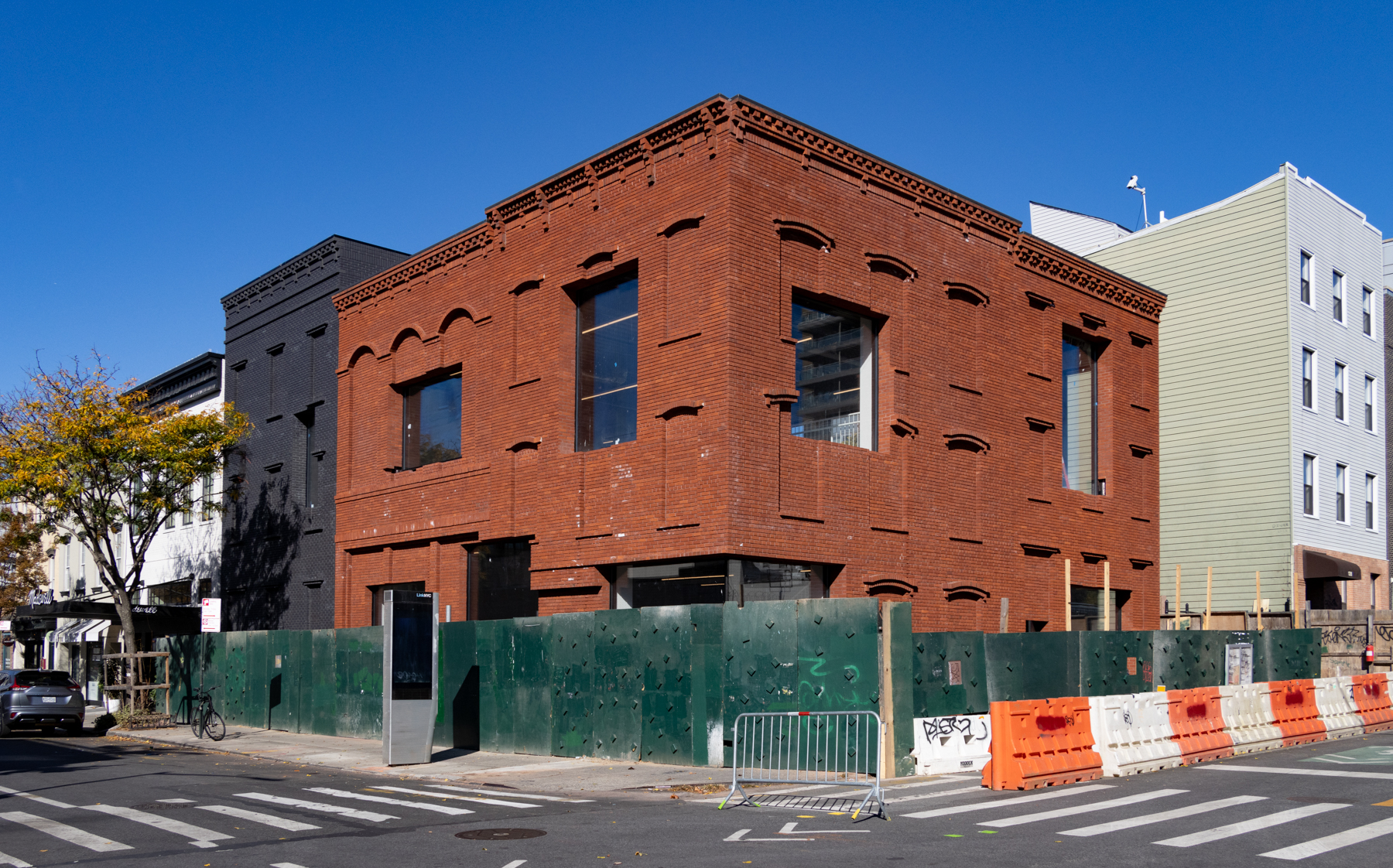

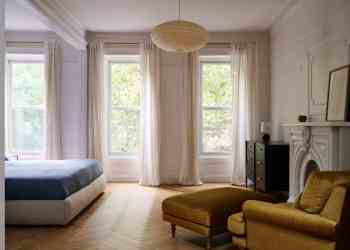



What's Your Take? Leave a Comment